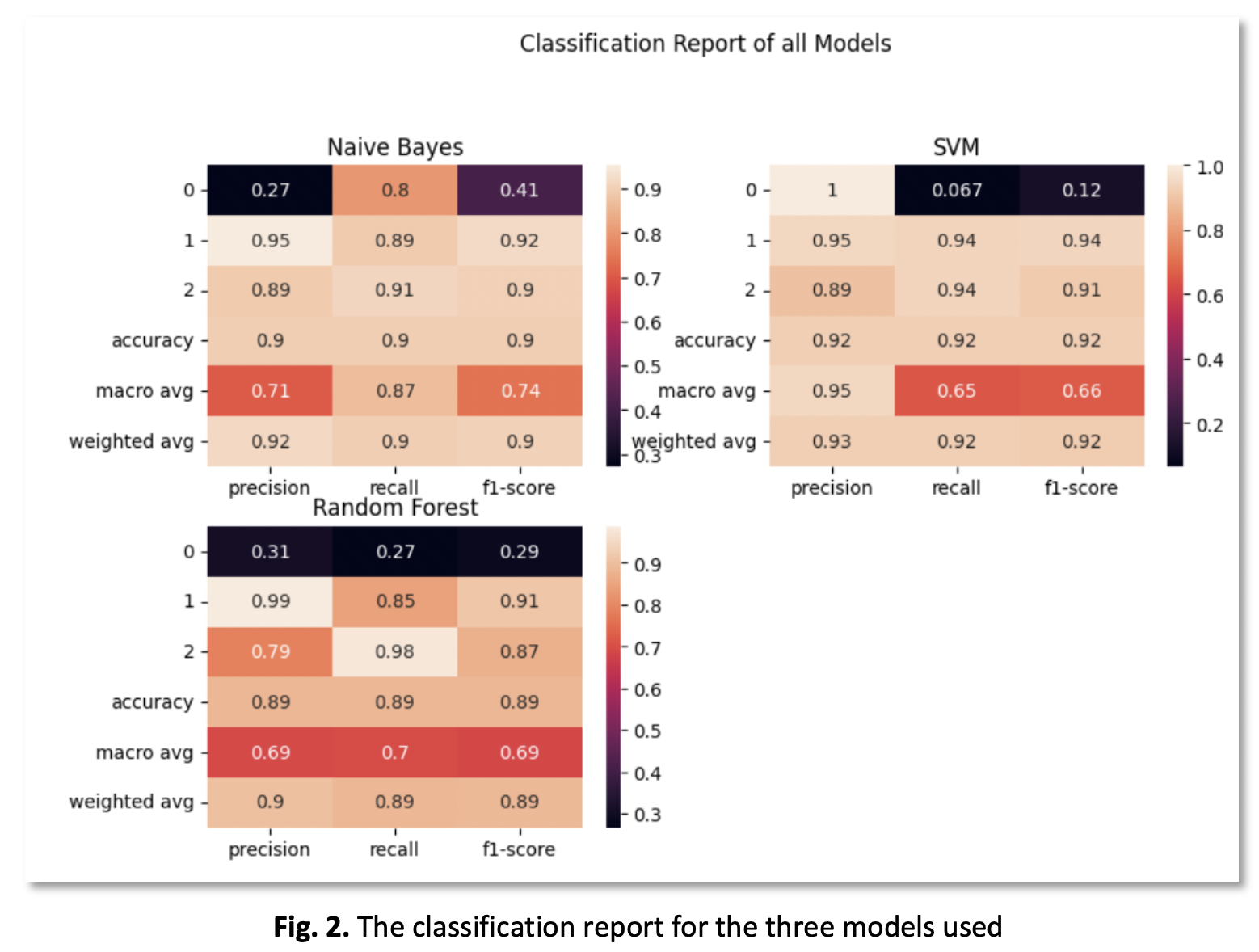Sentiment Analysis on the Place of Interest in Malaysia
DOI:
https://doi.org/10.37934/araset.43.1.5465Keywords:
Twitter, Natural Language Processing, Sentiment Analysis, Machine LearningAbstract
This study focuses on utilizing machine learning methods for sentiment analysis to identify positive and negative comments regarding Malaysian Places of Interest (PoI). The data was collected from Twitter using social media monitoring software and organized into tables. Pre-processing techniques and Natural Language Processing (NLP) methods were applied to handle missing values and prepare the text data for analysis. The dataset was then split into training and testing sets, and three supervised learning algorithms which are Support Vector Machine, Random Forest, and Naive Bayes were employed to evaluate the sentiment analysis models. The performance of each model was compared, and it was found that Support Vector Machine achieved the highest accuracy, recall score, F1 score, and precision score. This study demonstrates the potential to extend sentiment analysis to analyze sentiments expressed in texts written in the Malay language by utilizing the Malaya corpus. Additionally, visual dashboards can be created to present the findings and provide recommendations based on the insights gathered from the sentiment analysis of PoI feedback.Downloads

Downloads
Published
2024-04-09
How to Cite
Qiryn Adriana Kharul Zaman, Wan Nur Syahidah Wan Yusoff, & Qistina Batrisyia Azman Shah. (2024). Sentiment Analysis on the Place of Interest in Malaysia. Journal of Advanced Research in Applied Sciences and Engineering Technology, 43(1), 54–65. https://doi.org/10.37934/araset.43.1.5465
Issue
Section
Articles




























